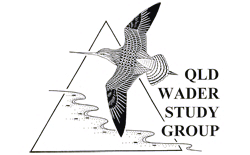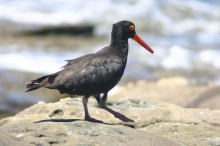Each month the QWSG organises a standardised count of as many high tide roosts in Queensland as it can. This is to obtain data concerning the number of waders and the different species of waders found in Queensland. From this, data for the site is obtained, data across species and overall trends can be followed.
The use of the high tide roost sites maximises the chances of obtaining an accurate number because the birds are pushed off the mudflats into a few, much smaller areas. These areas are usually free from vegetation so that a good sighting of the birds is achieved.
Each month a date is arranged so that the maximum height of tide, allied to the best time of day for the viewing and for volunteers, is arrived at (usually a weekend). The observers at the site then gather the relevant data. This information is divided into several sections.
The most important is the birds. The number of birds present for each species is noted, not only are the number of waders recorded but also other waterbirds, seabirds and raptors. In addition notes can be taken to cover plumage details or any flags observed.
Details of the weather are noted as these may have some bearing on numbers.
Disturbances to the roosting birds such as human, animal or vehicles are set down.
All this information is transferred to a standardised form and forwarded to the Count Coordinator, who checks for any obvious discrepancy. Then the data is entered into a database for later use.
As with most observations of waders a spotting scope with a magnification of at least 20X makes the job a lot easier. Familiarisation of the site will make a great difference to the coverage and efficiency of the count. One becomes used to the idiosyncrasies of the waders and their preferred roosting areas. It might not be possible to scan the whole of the site so care needs to be taken to cover the entire site without disturbing the birds too much. When there are large numbers of birds on the site care must be taken as the birds can be packed together. To assist the count a mechanical counter (clicker) can be of great benefit. Some observers like to use a small tape recorder so that they can go back over the count in peace at home.
We now have many years of consistently collected data from all over Queensland and this is now a valuable conservation tool and has recently led to a partnership between ourselves, The University of Queensland Spatial Ecology Group and a number of other parties which will analyse the dataset and use it to establish trends for shorebird numbers both in Queensland and throughout Australia.
We are always looking for new counters and if you would like to help out a good basic knowledge of wader identification is useful, but we can send you out with one of our counters to gain experience or you can join us on one of our ID days and build your ID skills up over time, before being given a site to count. Please use our contact page to contact our Count Coordinator if you are interested.

